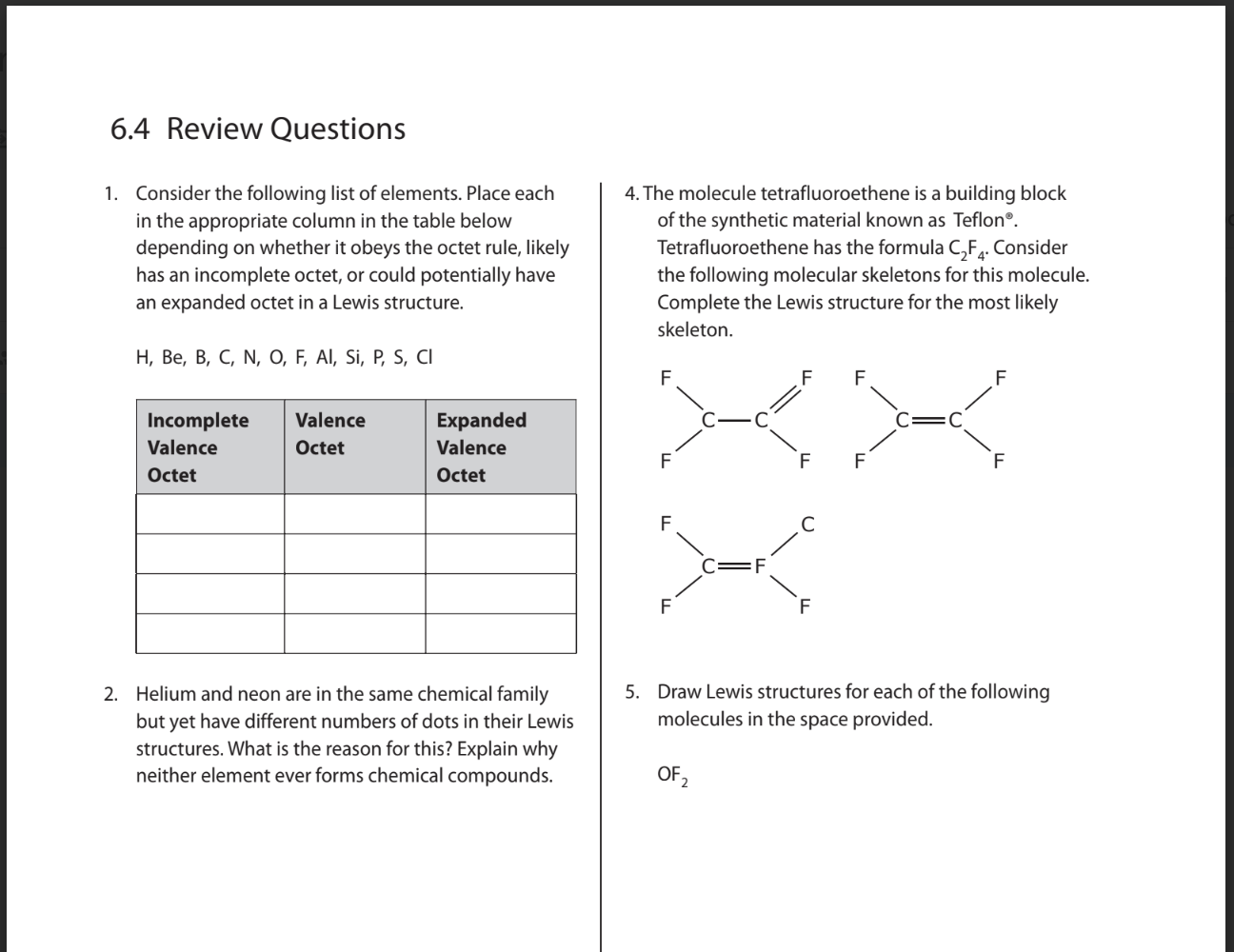Expanded Octet
Related Examples and Practice Problems
Topic Summary & Highlights
and Help Videos
Core Concept
The octet rule states that atoms tend to gain, lose, or share electrons to achieve a full set of 8 valence electrons, mimicking the electron configuration of noble gases.
Limitations of the Octet Rule: Not all elements adhere to this rule, especially those in and beyond the third period of the periodic table.
An expanded octet occurs when atoms in the third period or beyond can have more than eight electrons in their valence shell. This happens due to the availability of d-orbitals for bonding.
Practice Tips
Memorize Common Ions: Focus on learning the common polyatomic ions, charges, and patterns.
Roman Numerals for Transition Metals: Practice associating transition metals with their possible charges.
Cross-Method for Formulas: To determine the correct formula, use the “criss-cross” method to balance charges between cations and anions.
Core Concept
What is an Expanded Octet?
An expanded octet occurs when atoms in the third period or beyond can have more than eight electrons in their valence shell. This happens due to the availability of d-orbitals for bonding.
Why Can Some Atoms Expand Their Octet?
Explanation: Atoms in the third period and beyond have access to the 3d subshell, which allows them to accommodate extra electrons.
Energy Considerations: For these atoms, the energy required to use the 3d orbitals is low enough that they can expand their octet to bond with more atoms or accept extra lone pairs.
Examples of Molecules with Expanded Octets
Phosphorus Pentachloride (PCl₅)
Structure: Phosphorus forms 5 covalent bonds with chlorine, giving it 10 electrons around its central atom.
Lewis Structure: [Insert drawing space]
Sulfur Hexafluoride (SF₆)
Structure: Sulfur forms 6 covalent bonds with fluorine, giving it 12 electrons around the central atom.
Lewis Structure: [Insert drawing space]
Xenon Tetrafluoride (XeF₄)
Structure: Xenon forms 4 covalent bonds with fluorine, giving it 12 valence electrons while maintaining a square planar shape.
Lewis Structure: [Insert drawing space]
5. When and How to Recognize an Expanded Octet
Clues:
The central atom is from the third period or beyond.
The molecule requires more than 4 bonding pairs of electrons.
There are more than 8 electrons around the central atom in the Lewis structure.



